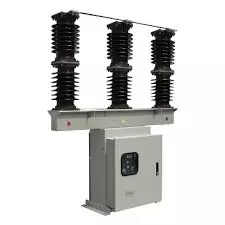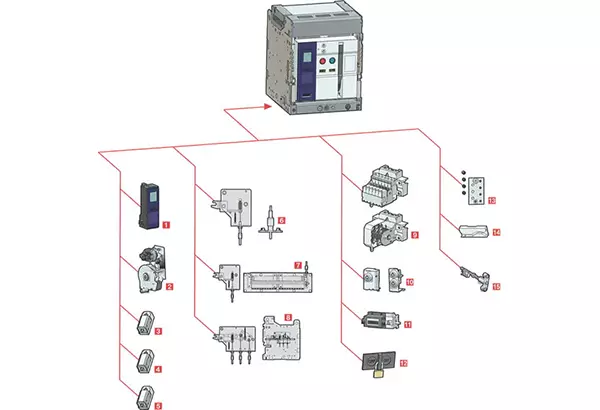CIRCUIT BREAKER COMPONENTS -- INTERNAL ACCESSORIES
2022-08-16
2020-03-23

Auxiliary contact refers to the contact that is mechanically linked to the opening and closing mechanism of the main circuit of the electrical circuit breaker. It is mainly used to display the opening and closing status of the circuit breaker. In the control circuit of the circuit breaker, the relevant electrical appliances are controlled or interlocked through the opening and closing of the circuit breaker. The rated currents of the molded case circuit breaker can be divided into 100A (which is a single break point conversion contact), 225A and above ( which are bridge contact structures), and the agreed heating current is 3A. Circuit breakers with rated current of 400A and above can be installed with two normally open auxiliary contacts and two normally closed auxiliary contacts, and the agreed heating current is 6A.
Alarm Contact
The alarm contact used for circuit breaker accident can only perform the task when the circuit breaker trips and breaks. It is mainly used for free tripping when overload, short circuit, undervoltage and other faults occur to the load of the circuit breaker. The alarm contact is changed from the original normally open position to the closed position, and the indicator light, electric bell, buzzer in the auxiliary circuit are connected to display or remind the fault tripping state of the circuit breaker. Since the probability of free tripping of the circuit breaker is not too much, the service life of the alarm contact is 1/10 of the service life of the circuit breaker. Generally, the working current of alarm contact does not exceed 1A.

Shunt release is a kind of release controlled by a voltage source, its voltage is independent of the main circuit voltage. Shunt release is an accessory for long-distance operation. When the power supply voltage is equal to any voltage between 70% -110% of the rated control power supply voltage, the circuit breaker can be reliably opened. Shunt release is a short-time work system, the coil energization time generally can not exceed 1s, otherwise the wire will be burned. In order to prevent the coil from burning out, a micro-switch is connected in series with the shunt trip coil. When the shunt trip is engaged by the armature, the micro switch switches from normally closed to normally open. Because the control circuit of the shunt release power supply is cut off, even if the button is artificially held down, the shunt trip coil will never be energized again, which prevents the coil from burning out. When the circuit breaker is closed again, the micro switch is in the normally closed position again.
Undervoltage Release
The undervoltage release is a kind of release that makes the circuit breaker open with or without delay when its terminal voltage drops to a specified range. When the supply voltage drops to within 70% to 35% of the rated operating voltage, the undervoltage release will operate. When the power supply voltage is equal to 35% of the rated operating voltage of the release, the undervoltage release will prevent the circuit breaker from closing. When the power supply voltage is equal to or greater than 85% of the rated operating voltage of the undervoltage release, the breaker will be reliably closed under thermal conditions.
Therefore, when a certain voltage drop occurs in the power supply voltage in the protected circuit, the circuit breaker can be automatically disconnected to cut off the power supply, so that the load electrical appliances or electrical equipments below the circuit breaker are protected from undervoltage damage. When in use, the under voltage release coil is connected to the power side of the circuit breaker, and the circuit breaker can be closed only after the under voltage release is powered on.
Due to these components of the circuit breaker, the circuit breaker has overload, short circuit and under voltage protection functions, and it has the ability to protect the line and power.




